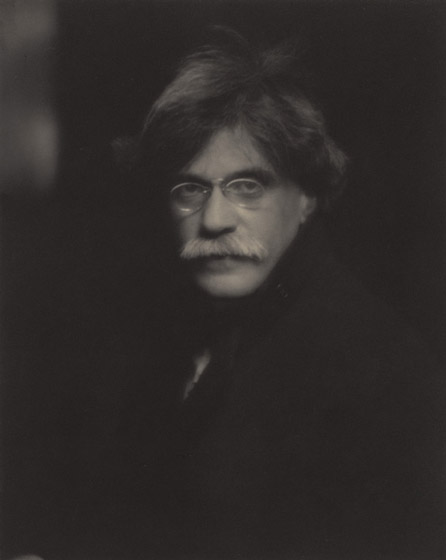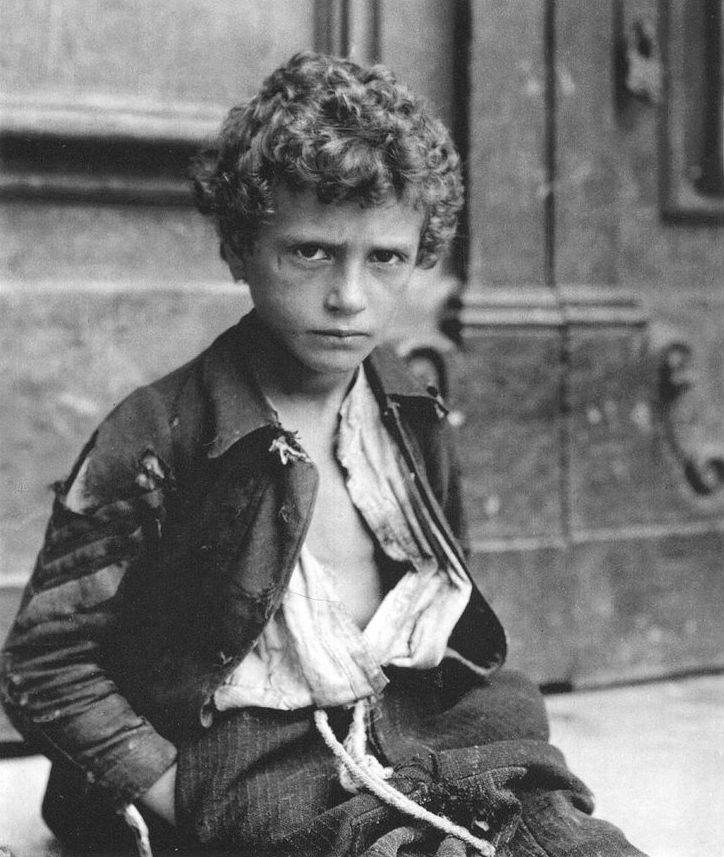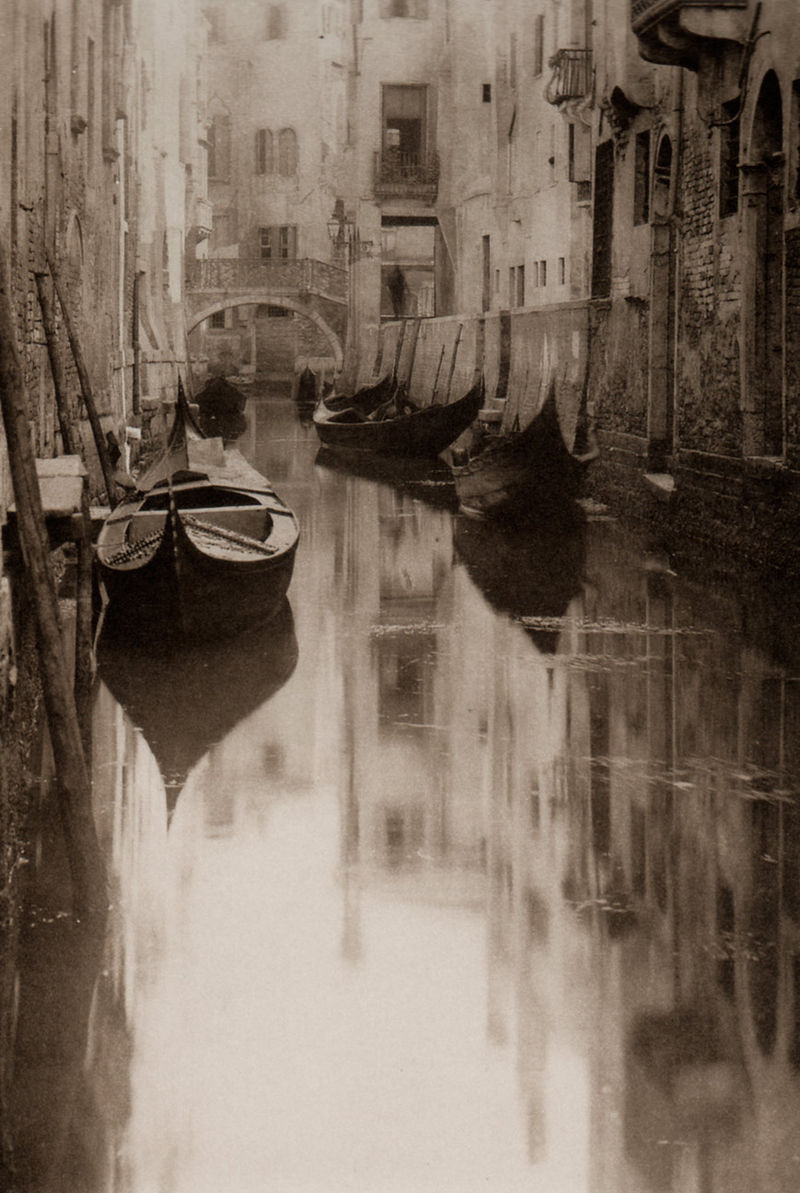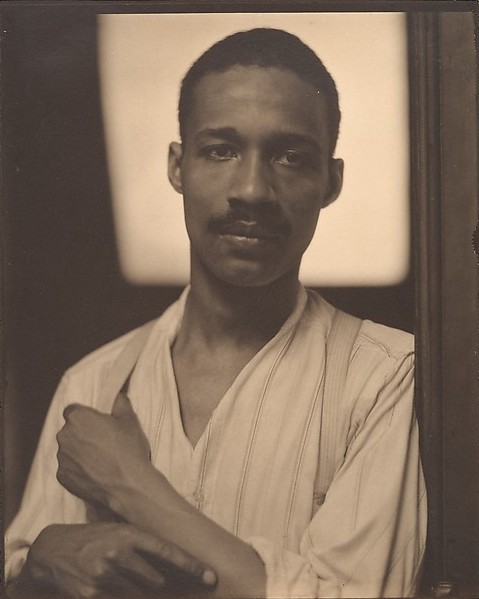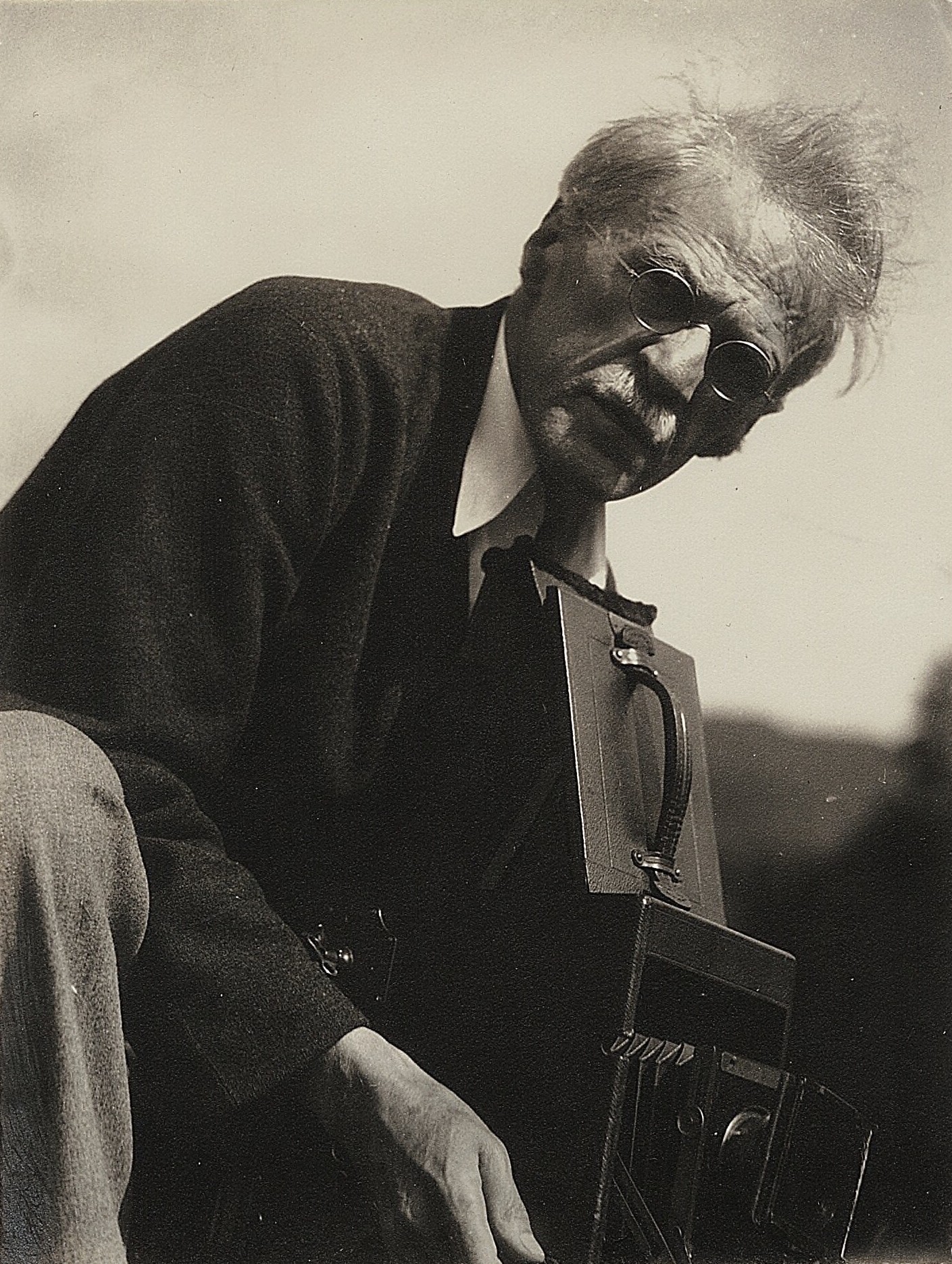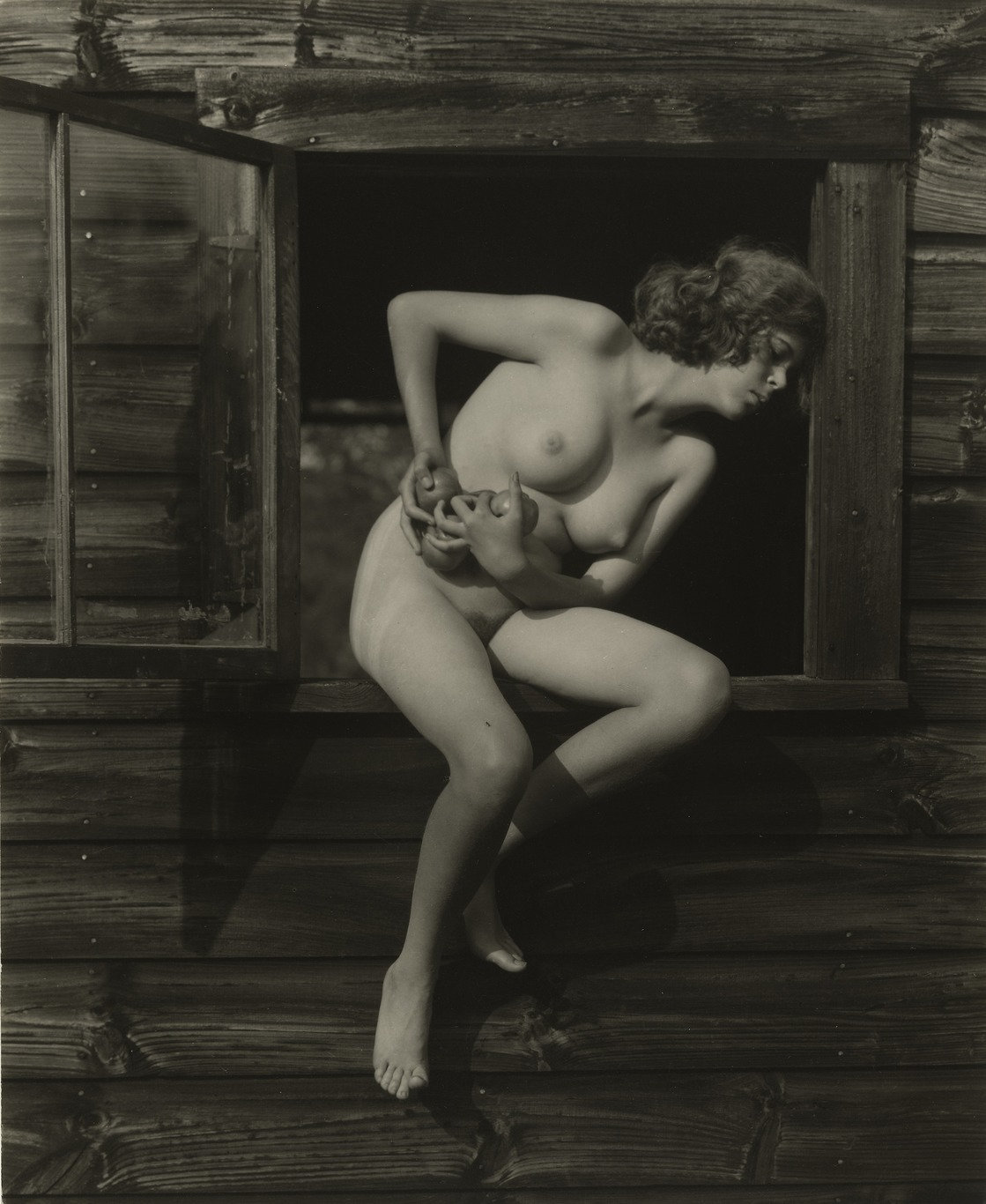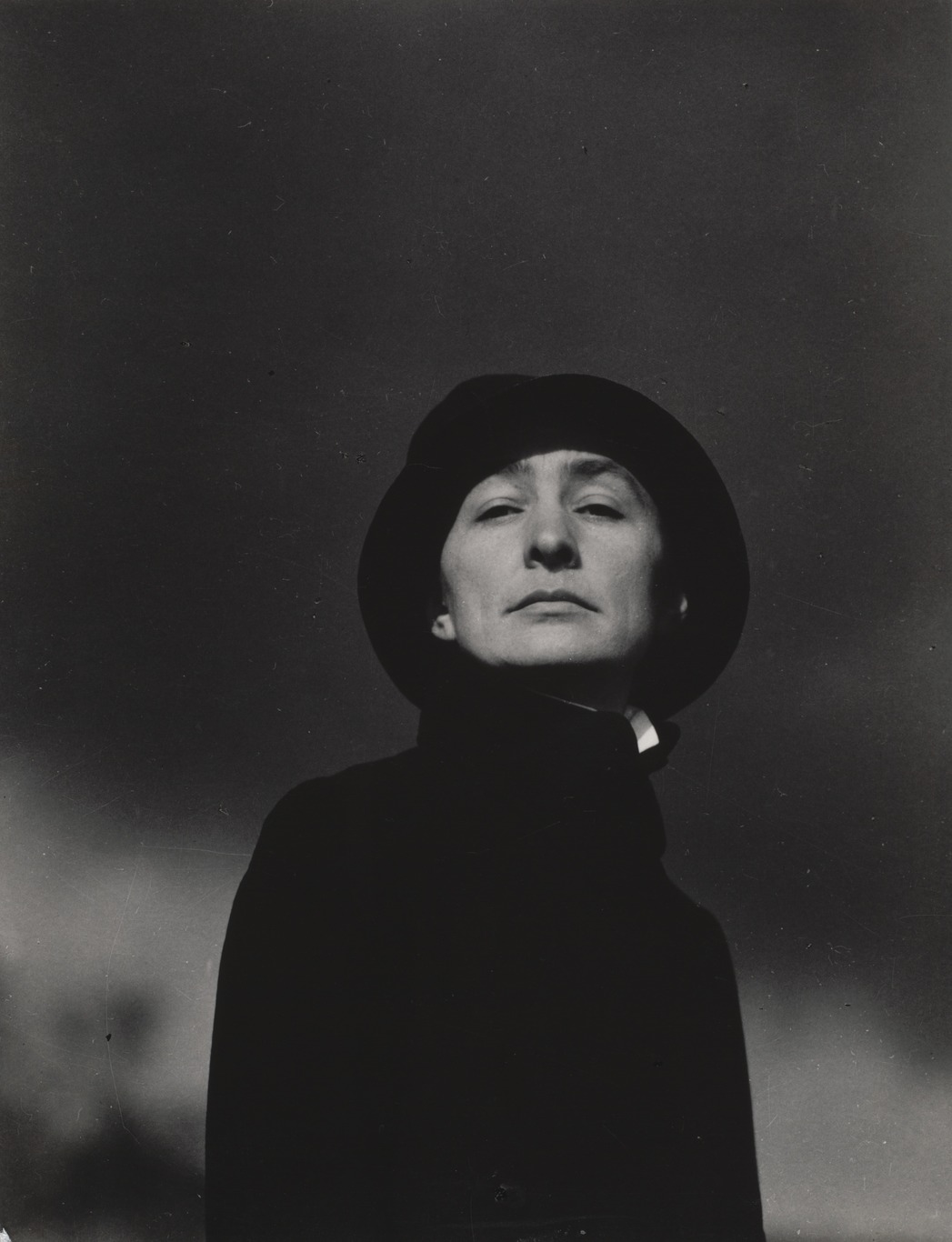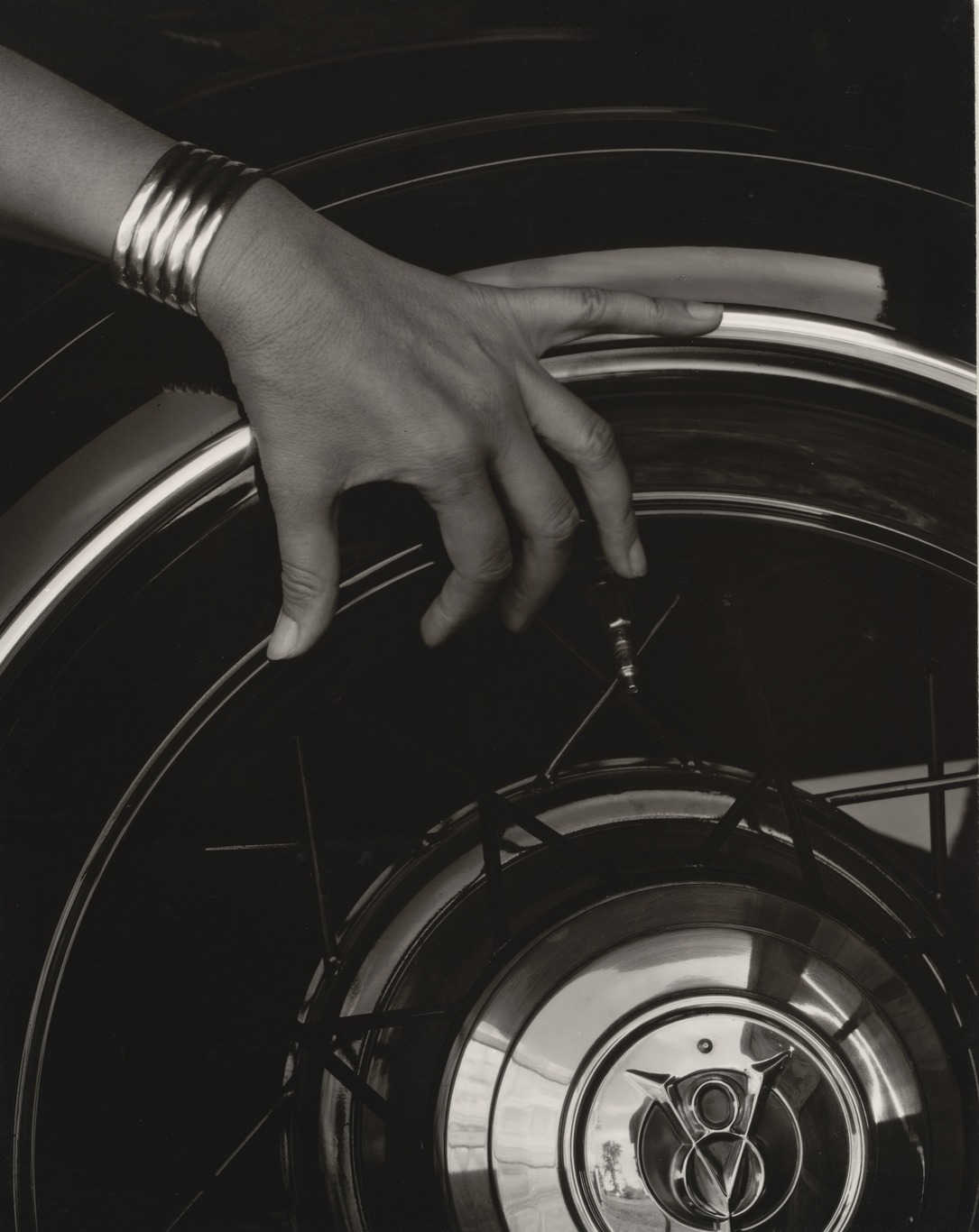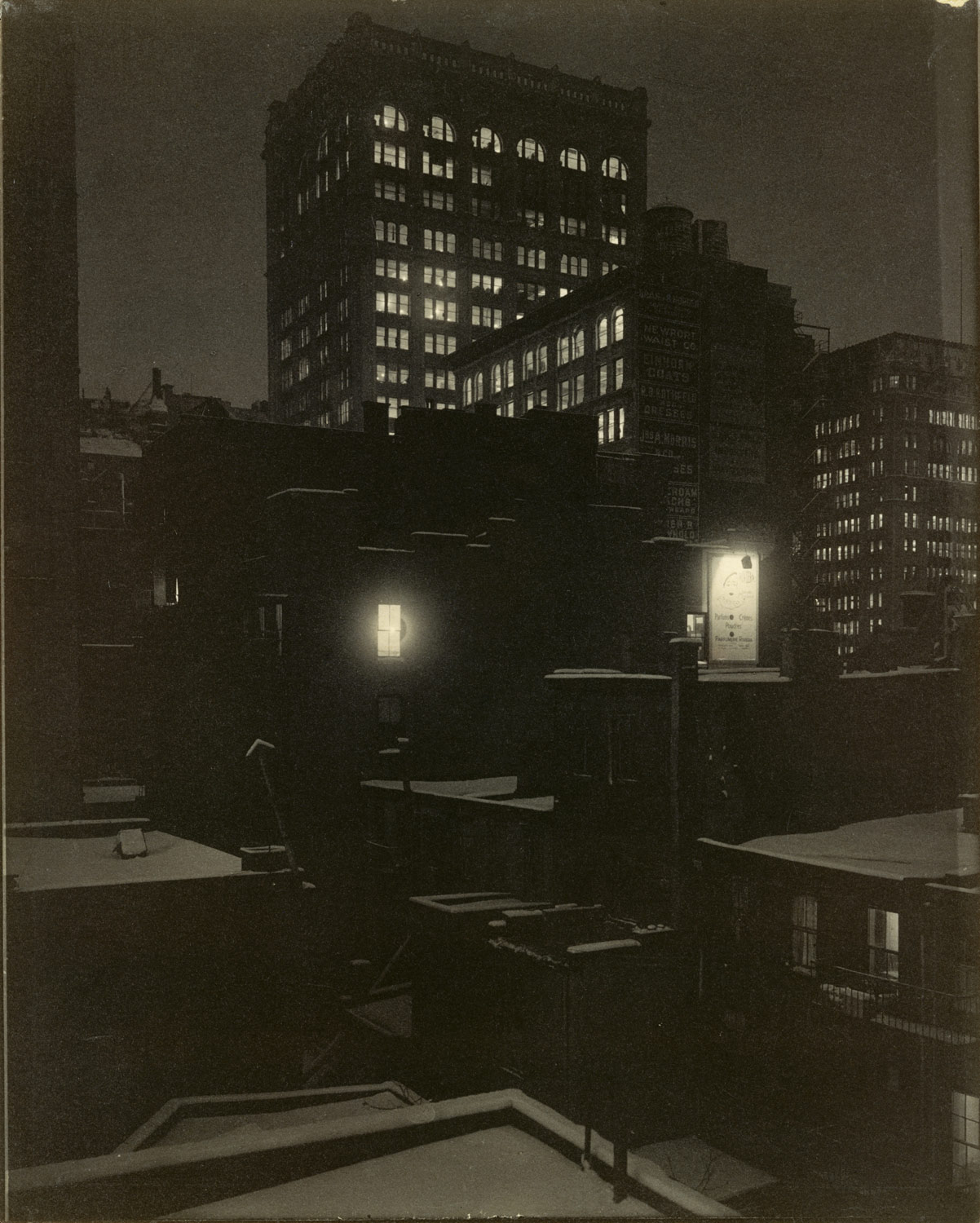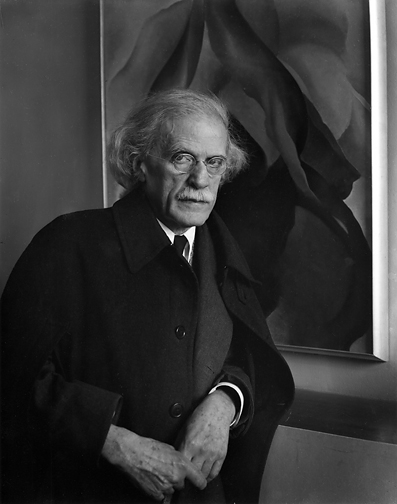Alfred Stieglitz (January 1, 1864 – July 13, 1946)
Alfred Stieglitz (January 1, 1864 – July 13, 1946) was an American photographer and modern art promoter who was instrumental over his fifty-year career in making photography an accepted art form. In addition to his photography, Stieglitz is known for the New York art galleries that he ran in the early part of the 20th century, where he introduced many avant-garde European artists to the U.S. He was married to painter Georgia O’Keeffe.
Stieglitz was born in Hoboken, New Jersey, the first son of German-Jewish immigrants Edward Stieglitz (1833–1909) and Hedwig Ann Werner (1845–1922). During the fetid, un-air conditioned summers in New York city, his family (like most upper-class families) would travel to
Lake George in the Adirondack Mountains, where they could avoid the six to eight weeks of semi-tropical heat and humidity of the city. As an adult, Stieglitz would return frequently to this same area to rest and spend time with his family.
Stieglitz studied mechanical engineering at the
Technische Hochschule in Berlin. By chance he enrolled in a chemistry class taught by Hermann Wilhelm Vogel, who was an important scientist and researcher in the chemistry of the then developing field of photography. In Vogel, Stieglitz found both the academic challenge he needed and an outlet for his growing artistic and cultural interests. At the same time he met German artists Adolf von Menzel and Wilhelm Hasemann, both of whom introduced him to the idea of making art directly from nature (i.e., photography). He bought his first camera and traveled through the European countryside, taking many photographs of landscapes and peasants in Germany, Italy and the Netherlands.
By this time Stieglitz already considered himself an artist with a camera, and he refused to sell his photographs or seek employment doing anything else. During that time, however, Stieglitz had befriended the editor of
The American Amateur Photographer magazine, and soon he was writing regularly for that journal. He also continued to win awards for his photographs at exhibitions, including the highly important joint exhibition of the Boston Camera Club, Photographic Society of Philadelphia and the Society of Amateur Photographers of New York.
The year 1917 marked the end of an era in Stieglitz’s life and the beginning of another. In part because of changing aesthetics, the changing times brought on by the war and because of his growing relationship with O'Keeffe, he no longer had the interest or the resources to continue what he had been doing for the past decade. Within the period of a few months, he disbanded what was left of the
Photo-Secession, ceased publishing Camera Work and closed the doors of 291. It was also clear to him that his marriage to Emmy was over. He had finally found “his twin”, and nothing would stand in his way of the relationship he had wanted all of his life.
In the late fall of 1929 Stieglitz returned to New York and set about establishing his new domain. Not only was it the largest gallery he had ever managed, it provided a space for his first darkroom in the city. Previously he had borrowed other darkrooms or worked only when he was at Lake George. On 15 December, two weeks after his sixty-fifth birthday, Stieglitz opened his new gallery,
An American Place (soon known only as “The Place”). He continued showing group or individual shows of his friends John Marin, Charles Demuth, Marsden Hartley, Arthur Dove and Paul Strand for the next sixteen years, but O’Keeffe received at least one major exhibition each year. He fiercely controlled access to her works and incessantly promoted her even when critics gave her less than favorable reviews. Often during this time they would only see each other during the summer, when it was too hot in her New Mexico home, but they wrote to each other almost weekly with the fervor of soul mates.
In 1936 Stieglitz returned briefly to his photographic roots by mounting one of the first exhibitions of photos by
Ansel Adams in New York City. The show was successful and David McAlpin bought eight Adams photos. He also put on one of the first shows of Eliot Porter's work two years later. He encouraged younger photographer Todd Webb to develop his own style and immerse himself in the medium; Stieglitz was considered at the time to have been the “godfather of modern photography”.
During the course of his long career, Stieglitz produced more than 2,500 mounted photographs. After his death O’Keeffe committed to assembling the best and most complete set of his photographs, selecting in most cases what she considered to be only the finest print of each image he made. In some cases she included slightly different versions of the same image, and these series are invaluable for their insights about Stieglitz's aesthetic composition. She chose only those prints that Stieglitz had personally mounted, since he did not consider a work to be finished until he completed this step. In 1949 she donated the first part of what she called the
“key set” of 1,317 Stieglitz photographs to the National Gallery of Art in Washington, DC. In 1980 she added to the set another 325 photographs taken by Stieglitz of her, including many nudes. Now numbering 1,642 photographs, it is the largest, most complete collection of Stieglitz's work anywhere in the world. In 2002 the National Gallery published a two-volume, 1,012-page catalog that reproduced the complete key set along with detailed annotations about each photograph.
